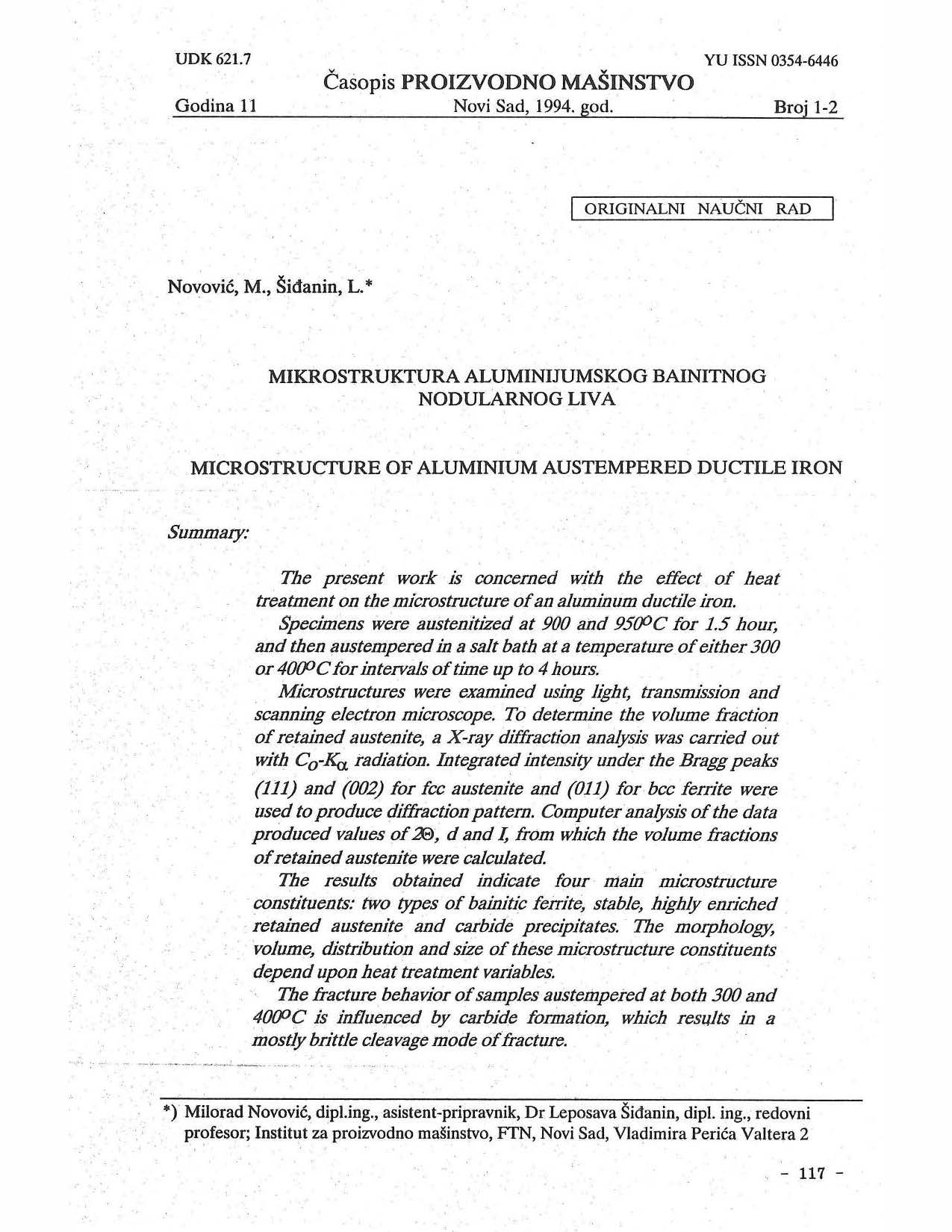Original Research Article

Published 1994-12-01
abstract views: 10 // FULL TEXT ARTICLE (PDF): 5
Keywords
- aluminum ductile iron,
- scanning electron microscope,
- microstructure
How to Cite
Novović, Milorad, and Leposava Šiđanin. 1994. “Microstructure of Aluminium Austempered Ductile Iron”. Journal of Production Engineering 11 (1, 2):117-25. https://doi.org/10.24867/JPE-1994-11-117.
Copyright (c) 2023 Journal of Production Engineering

This work is licensed under a Creative Commons Attribution 4.0 International License.
Abstract
Типови превода Превођење текста Изворни текст 1.229 / 5.000
Резултати превода Резултат превода The present work is concerned with the effect of heat treatment on the microstructure of an aluminum ductile iron. Specimens were austenitized at 900 and 9500C for 1.5 hour, and then austempered in a salt bath at a temperature of either 300 or 4000C for intervals of time up to 4 hours. Microstructures were examined using light, transmission and scanning electron microscope. To determine the volume fraction of retained austenite, a X-ray diffraction analysis was carried out with Co a,radiation. Integrated intensity under the Bragg peaks (111) and (002) for fcc austenite and (011) for bee ferrite were used to produce diffraction pattern. Computer analysis of the data produced values ofd, d and I, from which the volume fractions of retained austenite were calculated. The results obtained indicate four main microstructure constituents: two types of bainitic ferrite, stable, highly enriched retained austenite and carbide precipitates. The molphology, volume, distribution and size of these microstructure constituents depend upon heat treatment variables. The fracture behavior of samples austempered at both 300 and 406°C is influenced by carbide formation, which results in a mostly brittle cleavage mode of fracture.
